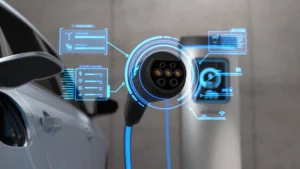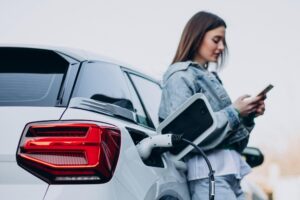As electric vehicles (EVs) become increasingly popular, understanding the optimal charging strategies is essential for both maximizing battery life and ensuring convenience. EV owners often face the dilemma of whether to charge their vehicles slowly or quickly. This article explores the benefits and drawbacks of both slow and fast charging methods, offering insights to help you make an informed decision.
Understanding Charging Speeds
EV charging can be categorized into three levels: Level 1, Level 2, and Level 3.
- Level 1 Charging: This method uses a standard household outlet (120V) and is the slowest, adding about 2 to 5 miles of range per hour. It is most suitable for overnight use when the vehicle is parked for extended periods.
- Level 2 Charging: Utilizing a 240V outlet, Level 2 chargers can add between 10 to 60 miles of range per hour. This method is common in homes, workplaces, and public stations, offering a balance between speed and practicality.
- Level 3 Charging: Also known as DC fast charging, Level 3 chargers deliver direct current at 400 to 800 volts, providing up to 80% charge in 20-30 minutes. These are typically found at commercial stations and are ideal for long-distance travel and quick top-ups.
Benefits of Slow Charging
Slow charging, typically via Level 1 or Level 2 chargers, has several advantages:
Battery Health:
- Reduced heat generation during slow charging leads to less stress on the battery, which can extend its lifespan.
- Lower charging currents minimize the risk of overcharging and thermal runaway, promoting safer battery operation.
Cost Efficiency:
- Charging overnight during off-peak hours can take advantage of lower electricity rates, reducing overall costs.
- Home-based slow charging setups generally involve lower installation and maintenance expenses compared to fast charging infrastructure.
Benefits of Fast Charging
Fast charging, primarily through Level 3 chargers, offers distinct benefits, especially for specific use cases:
Time Efficiency:
- Fast charging significantly reduces the time required to replenish the battery, making it ideal for long-distance travel or when time is of the essence.
- Quick sessions enable high vehicle utilization for commercial fleets and rideshare services, minimizing downtime.
Public Infrastructure:
- The growing network of fast charging stations enhances the convenience and feasibility of owning an EV, addressing range anxiety for potential buyers.
- Fast chargers at strategic locations, such as highways and travel centers, provide essential support for long trips, ensuring that drivers can recharge quickly and continue their journey.
Potential Downsides of Slow Charging
While slow charging has its benefits, there are also drawbacks to consider:
Long Charging Times:
- The extended duration required for a full charge can be inconvenient, especially for drivers with limited access to overnight parking or facilities.
- Slow charging is less practical for long-distance travel, where quick top-ups are necessary to maintain travel schedules.
Infrastructure Limitations:
- Public Level 2 chargers may not be as widely available or conveniently located as fast charging stations, limiting their practicality for on-the-go charging.
- Urban settings with high vehicle turnover and limited parking space may not accommodate the longer charging times required by Level 2 chargers.
Potential Downsides of Fast Charging
Fast charging, despite its advantages, comes with certain challenges:
Battery Degradation:
- Frequent exposure to high currents can accelerate battery wear and reduce overall battery lifespan, impacting long-term performance.
- Increased heat generation during fast charging can exacerbate battery degradation if not properly managed.
Higher Costs:
- Public fast charging stations often charge higher rates for electricity compared to home charging, increasing the cost per mile.
- Installing and maintaining fast chargers involves significant upfront investment and ongoing operational expenses, making them less accessible for some businesses and homeowners.
Balancing Charging Strategies
For most EV owners, a balanced approach to charging can optimize both convenience and battery health. Combining slow and fast methods based on specific needs and scenarios is recommended.
Optimal Charging Practices:
- Daily Use: Utilize slow charging (Level 1 or Level 2) for daily commutes and routine driving, taking advantage of overnight charging at home to ensure a full battery each morning.
- Travel Scenarios: Reserve fast charging (Level 3) for long-distance travel or when quick top-ups are required, minimizing the frequency of fast charging to reduce its impact on battery health.
Technological Advancements:
- Battery Management Systems (BMS): Modern EVs are equipped with advanced BMS that regulate charging rates and monitor battery health, mitigating the adverse effects of fast charging.
- Thermal Management: Innovations in thermal management systems help control battery temperature during charging, reducing the risk of heat-induced degradation and enhancing overall battery longevity.
Conclusion
The choice between slow and fast charging for EVs depends on various factors, including daily driving habits, availability of charging infrastructure, and long-term battery health considerations. Slow charging is beneficial for regular use, offering cost efficiency and enhanced battery longevity. Fast charging, on the other hand, is indispensable for long trips and scenarios requiring quick recharges. By adopting a balanced charging strategy and leveraging technological advancements, EV owners can maximize the benefits of both methods, ensuring a convenient and sustainable driving experience. As the EV market continues to grow, understanding and optimizing charging practices will be key to unlocking the full potential of electric mobility.




